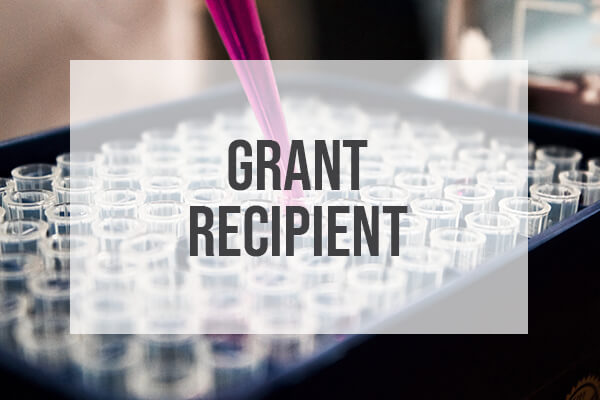Department of Endocrinology, Waikato Hospital, Hamilton 3240, New Zealand
Waikato Clinical Campus, University of Auckland, 3240, New Zealand
Department of Surgery, Waikato Hospital, Hamilton, 3240, New Zealand
Department of Anatomical Pathology, Royal North Shore Hospital, Sydney 2065, Australia
Hormones and Cancer Group, Kolling Institute of Medical Research, Royal North Shore Hospital, Sydney 2065, Australia
Cancer Diagnosis and Pathology Research Group, Kolling Institute of Medical Research, University of Sydney,
Sydney 2006, Australia
Sydney Vital Translational Research Centre, Royal North Shore Hospital, Sydney 2065, Australia
Introduction
Pheochromocytomas (PCs) and paragangliomas (PGLs) are rare catecholamine-producing tumors arising from chromaffin cells in the adrenal glands or extraadrenal neural crest tissue. These catecholamine-secreting tumors are frequently hereditary, resulting from germline mutations in various tumor predisposition genes. Of these genes, succinate dehydrogenase subunit B (SDHB) is of particular interest due to increased malignant potential of associated PC/PGLs (metastatic rate of 30% versus 10% of all PC/ PGLs) [1]. Determining whether PC/PGLs are benign or malignant in the absence of metastatic disease is limited by lack of reliable criteria to predict malignant behavior. Currently, the only effective treatment of PC/PGLs is surgery. Patients with inoperable malignant PC/PGLs may die of metastatic disease or from complications due to excess catecholamine production such as sudden death or heart failure. Nonsurgical treatment options for malignant disease are limited, and there is a lack of survival data available from randomized controlled trials using chemotherapy and radiolabeled therapies [2–4], in part resulting from the rarity of these tumors. Improved understanding of the biology of SDHB-associated and/or malignant PC/PGLs would assist in identifying new nonsurgical therapies. Many neuroendocrine tumors, including PC/PGLs, express one or more somatostatin receptor subtypes (SSTR1-5). Somatostatin is a neuropeptide with affinity for all 5 receptor subtypes and can inhibit both hormone secretion and cell proliferation. Analogues of somatostatin (octreotide, octreotide LAR, and lanreotide) demonstrate high affinity for SSTR2 and, to a lesser extent, SSTR5. Although they are very successfully used in the treatment of some tumors types, such as SSTR2-expressing growth hormone–secreting pituitary tumors, and have been demonstrated to not only control symptoms but also increase progression-free survival in patients with metastatic small intestinal neuroendocrine tumors [5,6], treatment for patients with chromaffin cell tumors has been variable and overall disappointing [7–13]. A number of studies have assessed SSTR subtypes in PC/ PGL [14–26]. Results have been conflicting as to the frequency of receptor subtype expression. Although SSTR3 has been detected in most tumors studied, SSTR2A expression has varied from less than 15%[15,16] to up to 100% of tumors [18,24]. Similarly, results for SSTR1 have varied, and when assessed, SSTR5 has been shown to be positive in less than 50% of tumors in most studies [14–16,18]. Differences in SSTR subtypes between tumors from patients with familial tumor syndromes and those with sporadic tumors have only been assessed in one study with only small numbers of hereditary tumors, and differences in SSTR expression were not identified [18]. A further study identified SSTR2a staining in 2 patients with a germline SDHD mutation, but there was no control group [25]. Studies assessing SSTR expression have used a variety of methods including reverse transcriptase polymerase chain reaction and immunohistochemistry (IHC). In addition to varying methods used, until recently interpretation has further been hampered by the lack of specific monoclonal antibodies against the 5 SSTR subtypes. Fischer et al [27] briefly reported the use of the monoclonal antibody UMB-1 against SSTR2A in a number of normal and neoplastic tissues including PCs, in which most tumors demonstrated positive staining. Use of monoclonal antibodies against the other SSTRs has not been reported in PC/PGLs. Recently, a novel somatostatin analogue has been developed, pasireotide, which has activity at a wider range of SSTRs than octreotide (all SSTRs with the exception of SSTR4) [28]. The role of pasireotide in patients with metastatic and/or inoperable PC/ PGL is not known, but cell culture studies have suggested that it is more promising than octreotide [21]. Based on the results of SSTR status, evidence of expression of SSTRs other than SSTR4 would support a targeted trial of this agent (unlabeled and/or labeled to radionuclides) in patients with metastatic/inoperable PC/PGL. The aims of this study were (1) to assess the somatostatin receptor status of PC/PGLs using specific monoclonal antibodies against somatostatin receptor subtypes 1 to 5 and (2) to determine whether somatostatin receptor subtype expression varies in SDH-deficient tumors when compared with tumors showing a normal pattern of SDHB staining.
Would you like to support the work of the Foundation?
Contact us for more information, or simply make a donation.




